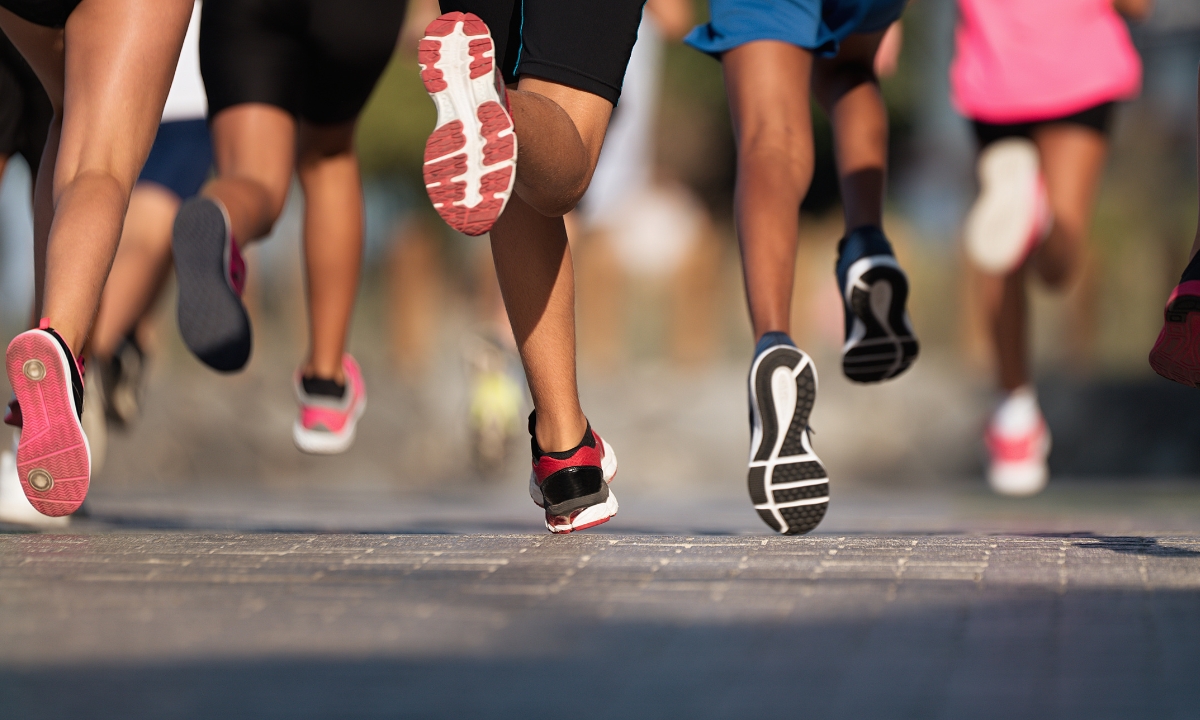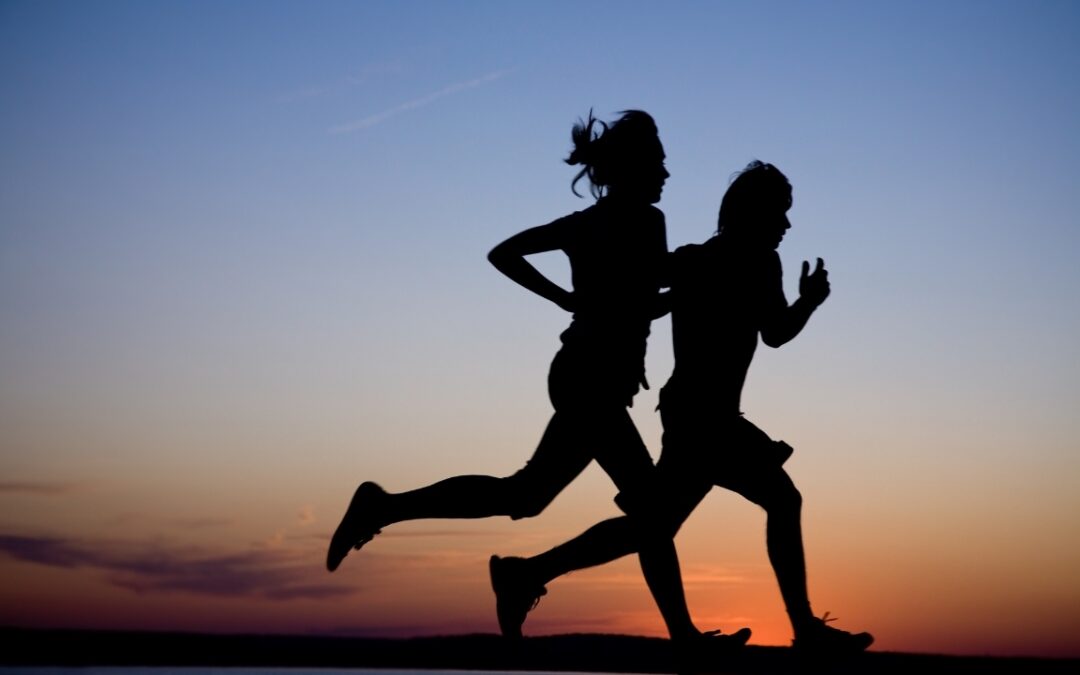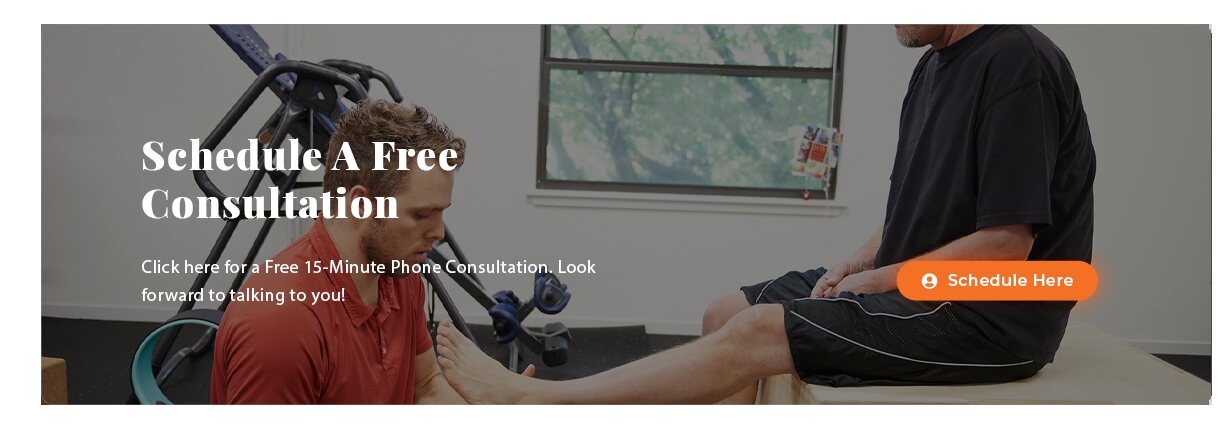“It’s not every day that you’ll be sidelined, so take it one day at a time. Focus on the few things that you can control and do your best to unpack why you got injured in the first place.” – Unknown
Running is a fantastic way to stay fit, but it can also lead to a host of injuries, from shin splints to plantar fasciitis. Unfortunately, many runners experience setbacks due to overuse injuries. And, for runners, few things are as frustrating as being sidelined by an injury. Whether it’s shin splints, plantar fasciitis, or persistent knee pain, these issues can derail training plans and chip away at the joy of running.
But what if there was a way to keep running pain-free?
Fortunately, there’s good news. A revolutionary approach has been helping runners for several years overcome these injuries and get back to doing what they love: Anatomy in Motion, or AiM.
Anatomy in Motion isn’t just a treatment; it’s a transformative method that identifies and corrects the root causes of pain. By focusing on how the body moves as an integrated system, AiM offers runners the tools they need to move more efficiently, avoid injuries, and run pain-free.
Understanding This Approach Called Anatomy in Motion
Developed by movement specialist Gary Ward, Anatomy in Motion is a biomechanical approach to understanding and improving how the body moves. AiM emphasizes the importance of the foot’s role in the body’s overall alignment and movement patterns. Every step you take sends a ripple effect through your entire kinetic chain—the interconnected system of muscles, joints, and bones.
When one part of this chain becomes dysfunctional—whether due to improper foot mechanics, muscle imbalances, or poor posture—it can create compensations that lead to pain and injury. AiM seeks to restore balance and optimal function to the body by addressing these underlying issues.
As Pain and Performance Solutions founder Julian Corwin notes,
“The most important movement pattern we do as humans is walk by deeply understanding our walk and what happens in every phase of our walk we can begin to restore that which was lost when the brain restores the movement pattern that was lost and we go back to our natural ways of walking the body has opportunities to heal itself.”
Common Running Injuries and AiM’s Role in Recovery
Running injuries often stem from repetitive stress and poor movement mechanics. AiM provides a fresh perspective on treating these injuries by focusing on the root cause rather than just the symptoms. Here’s how AiM can help with some of the most common running injuries:
1. Plantar Fasciitis
Plantar fasciitis, characterized by stabbing heel pain, often arises from poor foot mechanics or tight calf muscles. AiM identifies patterns of overuse or stiffness in the foot and ankle and helps release tension while retraining proper foot function. This not only alleviates pain but also prevents recurrence.
2. Runner’s Knee (Patellofemoral Pain Syndrome)
Runner’s knee is frequently caused by imbalances in the hip, knee, and foot alignment. AiM’s assessment of the entire kinetic chain ensures that the knee moves as part of a well-functioning system. By restoring balance, AiM reduces stress on the knee joint, promoting healing and preventing future pain.
3. Shin Splints
Shin splints, or medial tibial stress syndrome (MTSS), often result from overuse and improper loading patterns in the lower leg. AiM can identify whether the problem originates from the feet, calves, or even the hips. Adjusting these patterns helps reduce strain on the shin bone and surrounding muscles.
4. Achilles Tendinitis
This injury, common among runners, often results from tightness or weakness in the calves and improper gait mechanics. AiM works to restore the natural flow of movement in the ankle and foot, ensuring that the Achilles tendon is no longer under undue stress.

How AiM Works: The Gait Cycle in Focus
Central to Anatomy in Motion is the gait cycle, the series of movements your body goes through with each step. AiM practitioners analyze the gait cycle to pinpoint dysfunctions in how you walk or run. Every phase of the gait cycle—from heel strike to toe-off—reveals insights into your body’s movement habits.
For example, a runner dealing with hip pain may have an issue with how their foot strikes the ground. If the foot doesn’t roll through its full range of motion, the hip might compensate by over-rotating or tightening, leading to pain. By restoring proper foot mechanics, AiM ensures that the hip can function more effectively, reducing pain and improving overall movement efficiency.
Why AiM Is Different from Traditional Treatments
Traditional approaches to running injuries often focus on the area of pain. For example, knee pain might be treated with stretches or strengthening exercises for the quads and hamstrings. While this can be helpful, it doesn’t address why the pain started in the first place.
AiM takes a more holistic approach. It recognizes that pain in one area is often the result of dysfunction elsewhere in the body. By evaluating the body as a whole, AiM identifies and resolves the root cause of pain, leading to more effective and lasting results.
The Benefits of AiM for Runners
- Injury Prevention: By identifying and correcting movement dysfunctions before they lead to pain, AiM helps runners stay injury-free.
- Improved Efficiency: Restoring proper mechanics allows the body to move more efficiently, reducing wasted energy and improving performance.
- Pain Relief: AiM addresses the root causes of pain, providing relief for chronic and acute injuries.
- Enhanced Recovery: For runners coming back from an injury, AiM offers a structured approach to restoring balance and function, speeding up the recovery process.
So, What Happens During an AiM Session?
An AiM session begins with a detailed assessment of your body’s alignment and movement patterns. We will likely observe your gait, test your range of motion, and evaluate how different parts of your body interact.
Once they identify areas of dysfunction, we’ll guide you through specific movements and exercises designed to restore balance and optimize your body’s mechanics. These movements might involve small, precise shifts in foot positioning or exercises to retrain muscle activation patterns.
Runners often find that even subtle adjustments can lead to significant improvements in how they move and feel.
Real-Life Success Stories
Runners who’ve integrated AiM into their training often report life-changing results. One marathoner, struggling with chronic shin splints, found relief after just a few AiM sessions. By addressing imbalances in her foot mechanics, she was able to run pain-free for the first time in years.
Another runner, sidelined by plantar fasciitis, discovered through AiM that his calf muscles were overcompensating for limited ankle mobility. With targeted exercises to restore proper movement, he not only overcame his injury but also shaved minutes off his race times.
Integrating AiM into Your Training
If you’re a runner dealing with pain—or if you simply want to optimize your performance—consider incorporating AiM into your routine. AiM works well alongside other modalities, such as physical therapy or strength training, to provide a comprehensive approach to running health.
Look for a qualified AiM practitioner who understands the demands of running and can tailor the approach to your unique needs.

Rediscover the Joy of Running with Pain and Performance Solutions
Running should be a source of joy and freedom—not frustration and pain. With Anatomy in Motion, runners have a powerful tool for overcoming injuries, preventing future problems, and enhancing performance. By addressing the root causes of dysfunction and restoring balance to the body, AiM can help you hit the pavement again with confidence and ease.
Don’t let pain hold you back. Explore how Anatomy in Motion can transform your running experience and help you rediscover the thrill of a pain-free stride.
Taking the Stride Towards Pain-Free Running
If you’re experiencing pain from a running injury and suspect your gait might be a contributing factor, don’t hesitate to seek help. At Pain and Performance Solutions, our trained therapists can assess your gait, identify the root cause of your discomfort, and develop a personalized treatment plan to help you achieve pain-free and efficient movement.
Contact us today to schedule an appointment and get back to running without pain.

